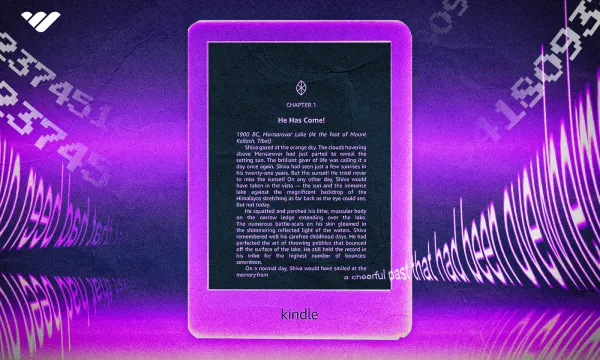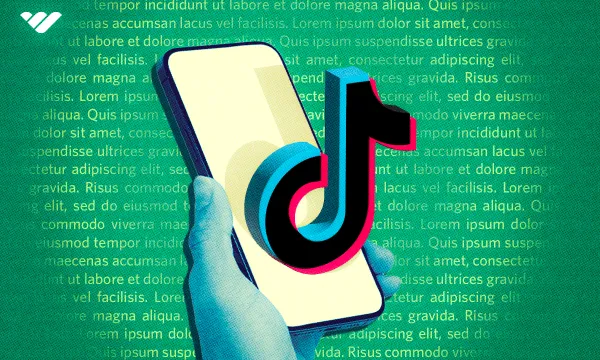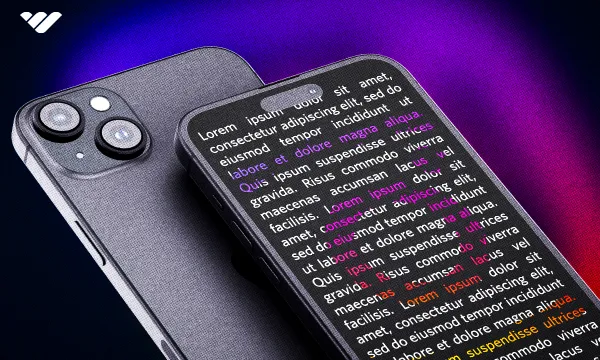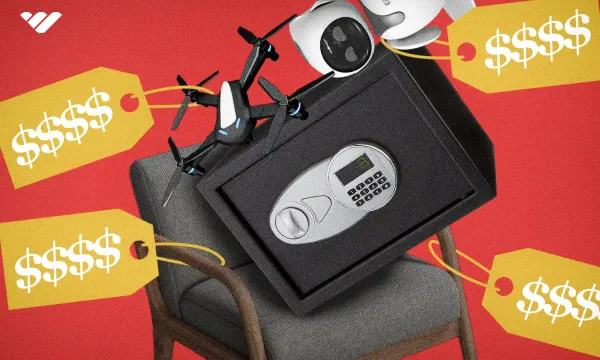If you’re thinking about writing an eBook, or even already outlining it, there are lots of considerations to keep in mind. You might already know what sort of category your eBook is going to fall into, what questions you’ll answer, or what key plot points or messages you will be taking the reader through.
The problem is, you’re not quite sure how long your eBook should be. Are there hard and fast rules for eBook length in general? What’s the minimum word count required by the major publishers or self-publishing platforms? How many pages is too many, and should you consider splitting your eBook into volumes and serializing it? And does page count even matter in the world of customizable font sizes and a multitude of devices?
We’ll answer all these questions and more in this guide, so keep on reading!
How Long Should an eBook Be?
What we’ve found is that the most successful eBooks are all about value, not length, so you’ll do fine whether your book’s over 70 pages or under 30, as long as you’re giving the reader what they want.
Gaining a good enough understanding of your readership to accomplish this objective is no mean feat, but there are some instructive ways to look at it. First of all, look inward—why are you writing this eBook?
If you’re looking to establish yourself as an author with this eBook, you shouldn’t be looking at the upper end of the scale right away. This depends on the niche, of course, and it may not be able to tell the story you want in just a few thousand words, but save your magnum opus for when you’ve built that audience up already.
On the other hand, extremely short eBooks are absolutely fine too if they serve a certain purpose. Plenty of marketers use short eBooks as a free download to secure potential clients’ email addresses—in this situation, you aren’t expected to provide an extraordinary amount of value.
You’ll also need to bring price into the conversation alongside niche and purpose, here. Again, if the aim of the game is to build your audience, pricing your eBook too high might defeat that purpose entirely.
The Average eBook Length
We’ve already mentioned an eBook’s purpose as having a role to play when it comes to length, but when it comes to averages, the topic or niche of the eBook plays a huge role.
This chart by eBook market intelligence firm K-lytics shows that page lengths can be deceptive:
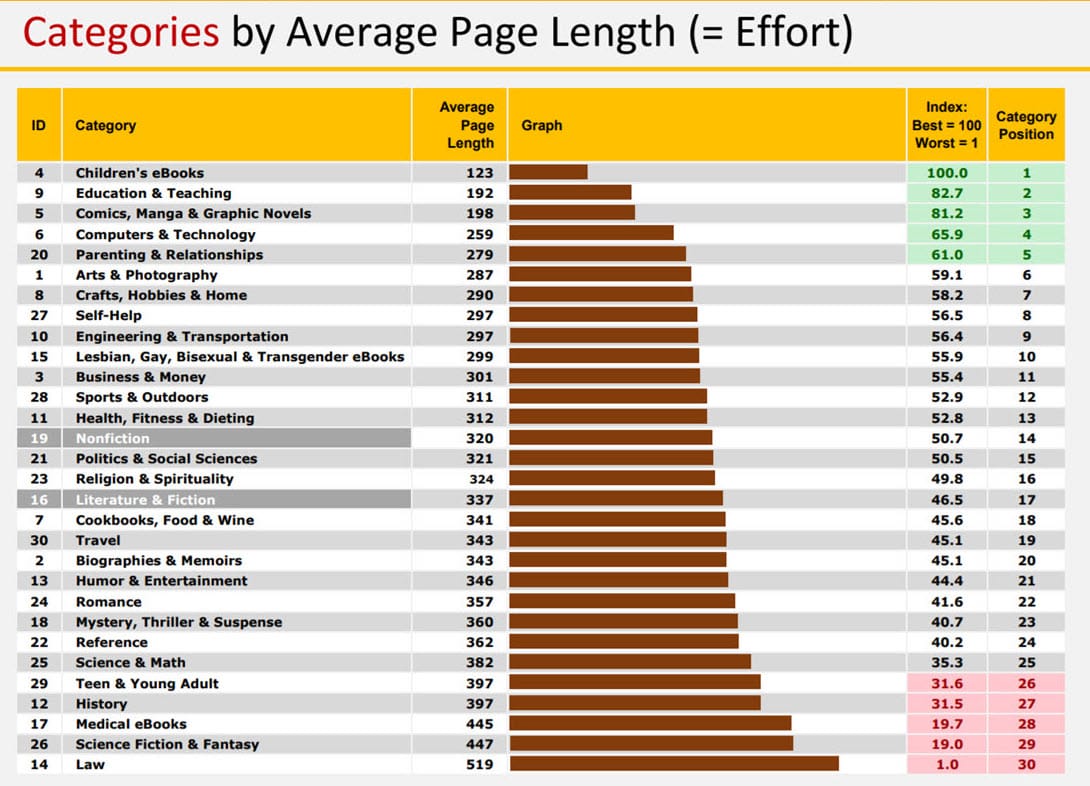
What’s clear here is that your word count is probably the biggest consideration when it comes to eBook length since page count can be misleading—per this chart, a 100-page children’s eBook would have just 12,300 words while a law eBook with the same page count would have a mammoth 51,900 words. Let's look at a few industry guidelines for eBook lengths,
- Amazon’s Kindle is the dominant name in the eBook market, and their publishing guidelines specify, under “disappointing content”, that they do not allow content that is too short. There’s no further elaboration than that, although it’s rare to find eBooks (outside of the children’s category) for Kindle that fall below 2500 words.
- Kindle also attempts to standardize page count meaningfully, setting out a standard type and font, and attempting to equate the book’s eBook page count with the amount of page turns a reader would make while reading a print copy of the same book. The word count per page on Kindle works out to around 200 words.
- As far as an upper limit goes, an eBook or print book can safely be categorized as novel-sized at around 70,000 to 100,000 words, although there are plenty of iconic works that fall below that threshold. Lots of great novelists also started off with short books, again going back to that purpose of building an audience as we mentioned earlier.
The average eBook, therefore, will fall somewhere between those two extremes depending on category, with some niches (children’s, photography, comics etc) relying far more heavily on images than words.
It’s also worth noting that eBooks have brought down the word count compared to traditional print book lengths, and a lot of successful authors have migrated to shorter and even serialized versions of their work to match the eBook format and what sells best.
Categorizing eBook Lengths

Now that we’ve established that eBook lengths are best judged by word count rather than page count, and what’s considered short or long can differ from category to category, let’s build a framework for eBook length that you can work with.
#1. Short eBooks
There are plenty of reasons to write short eBooks, and we’ve already mentioned a couple of them. They make excellent tools for lead generation, so if you’re running a business, an eBook can be very valuable since potential customers are “paying” for it with just their email addresses.
Another advantage a short eBook can bring is that it allows you to reduce its price. From the perspective of a writer, the difference between selling a single eBook at $3 versus $13 isn’t huge. The reader, on the other hand, has a big call to make—that $10 difference can be a big deal, within the context of a purchase like an eBook.
As such, a low price opens up the possibility of a higher volume of sales, and it’s vital as a starting author or one looking to build an audience. It’s also a great market test of your eBook’s style and concept—you may not get it right on the first try, so a shorter eBook means less effort put forward in search of that winning formula.
It’s also well worth considering the serialization of your content. Not only is this a proven formula when it comes to eBooks, it’s also got a lot of historical precedent dating back to the Victorian era—it was Charles Dickens who started things off with The Pickwick Papers, and some of the biggest names in literary history followed.
On Kindle’s Top Sold list of eBooks, the shorter end of the scale tends to be around 300 pages for fiction, which is verging on the traditional word count required for a novel. That said, you’ll find plenty of novellas at half that length, and serials clock in at even less.
Non-fiction is an entirely different ball-game, and in some areas you might only consider an eBook short at just a couple of thousand words. Going too much shorter than that may be risky, but it’s perfectly fine if you’re pricing at just a buck or two and still giving your reader their money’s worth!
#2. Mid-length eBooks
As a first-time or relatively new eBook author, you’re most likely going to land in short or mid-length eBooks as you’re establishing yourself, although this category’s more suited if fiction is your thing.
If an eBook of 5000 words or less is short, then this mid-length category ranges up to about 20,000 words—essentially, anything from a meaty short story to the longest novelettes. Even if you’re in the world of non-fiction, these mid-length eBooks offer a great format to really get your message across and cover a topic comprehensively.
You’ll find a few of Kindle’s Top Sold eBooks in this word count range, and one of the reasons for that is royalties—historically, the best price range for authors in terms of royalties has been in the $2.99-$9.99 range, which is reasonable for a mid-length eBook.
That being said, you shouldn’t shy away from price points just above that range for fear of losing out. Self-publishing is getting easier and easier, and you can guarantee yourself 97% of your eBook’s sales by creating and selling your eBook on a digital marketplace like Whop.
A mid-length eBook is usually written to be read in no more than a handful of sittings, but you can also think about what your readers will gain from your eBook—if it’s really dense with great value content, you can edge the price up toward the higher end of the scale without worrying too much about word count.
#3. Long eBooks
Long eBooks tend to be anything over 20,000 words, which means that most fiction authors land in this category. In fact, fiction can go a whole lot longer—the current chart-topper, Frank Herbert’s Dune, clocks in at 188,000 words across 890+ pages. Tolstoy’s War and Peace has over half a million words, and Robert Jordan’s Wheel of Time series has over 4.4 million!
Even if you’d like to try your hand at hitting those sorts of numbers, there’s absolutely no need for it. The best-selling eBooks in the long category, even for fiction, tend to be in the 300 to 500-page range, meaning around 60,000 to 100,000 words.
As a matter of fact, it’s usually a challenge to even conceptualize and then outline an eBook of that sort of length, especially if it’s non-fiction. Most long eBooks tend to tackle bigger issues or wide subject areas, with plenty of room for broad brush strokes. That said, if you can take a niche topic and drill down into it with enough real depth and expertise to hit these counts, you’re really going to stand out from the crowd.
One big pitfall to watch out for when writing a long eBook is to avoid drawing a directly correlated expectation between length and price. Yes, your long eBook can be sold for more than a mid-length one and you’re pretty safe pricing well above that $2.99-$9.99 range we mentioned earlier, but page count isn’t a premium product feature.
You’ll do far better if you market your eBook along the lines of value, and tell readers exactly what benefits they’ll be getting by purchasing your eBook.
eBook Content: What Every eBook Should Contain
Many authors spend years finding the perfect formula for their books and eBooks, but each success story makes life a little easier for those who follow. Generally, a good eBook of any category features three main elements:
- A problem that’s solved by the end of the eBook
- Key takeaways or big “aha!” moments
- Actionable information
This isn’t a structure, but more of a checklist of what to include, and it will hold true regardless of what sort of eBook you’re writing. A self-improvement book, for example, will outline a problem state, and attempt to solve that problem through the course of the book, giving you some big things to think about along the way and pitfalls to be aware of and avoid.
You can even keep this list in mind for fiction. Protagonists usually start facing a problem, drawing you in to empathize with them as they overcome obstacles on the way toward solving it. The big moments come in the form of plot twists or shake ups, and actionable information corresponds to how you can buy more of the same author or publisher’s work.
These contents are good to keep in mind when writing your eBook to ensure that you’re giving your readers value. In non-fiction, the best books will solve their given problem well, while also providing lots of key takeaways or things to think about, letting the reader apply lessons learned from the eBook easily.
Create and Sell Your eBook with Whop
Once you’ve outlined and written your eBook, all that’s left to do is publish it. Traditionally, authors have always needed a publisher, and the world of books was gatekept by publisher approval. With eBooks, the game has changed, and self-publishing is a great option.
Most eBook authors look toward established eBook platforms such as Kindle, but as we’ve already hinted at, Kindle and its competitors can be restrictive in some areas. And, like many creativity monetization platforms, you can expect to lose a lot of your revenue to the platform - just check out this guide to eBook sales platforms for more information on pricing and revenue splits.
The answer, therefore, is to look for a platform that not only distributes royalties more equitably, but actually takes only a small fraction of it! Why settle for less than half of your eBook’s earnings when you can make 97% instead?
Whop is hands-down the best digital marketplace for entrepreneurs, and that includes eBooks and authors with stories to tell and problems to solve. Getting set up with Whop is really easy, too—either watch the above video, or follow these quick steps:
#1. Sign up at Whop.com
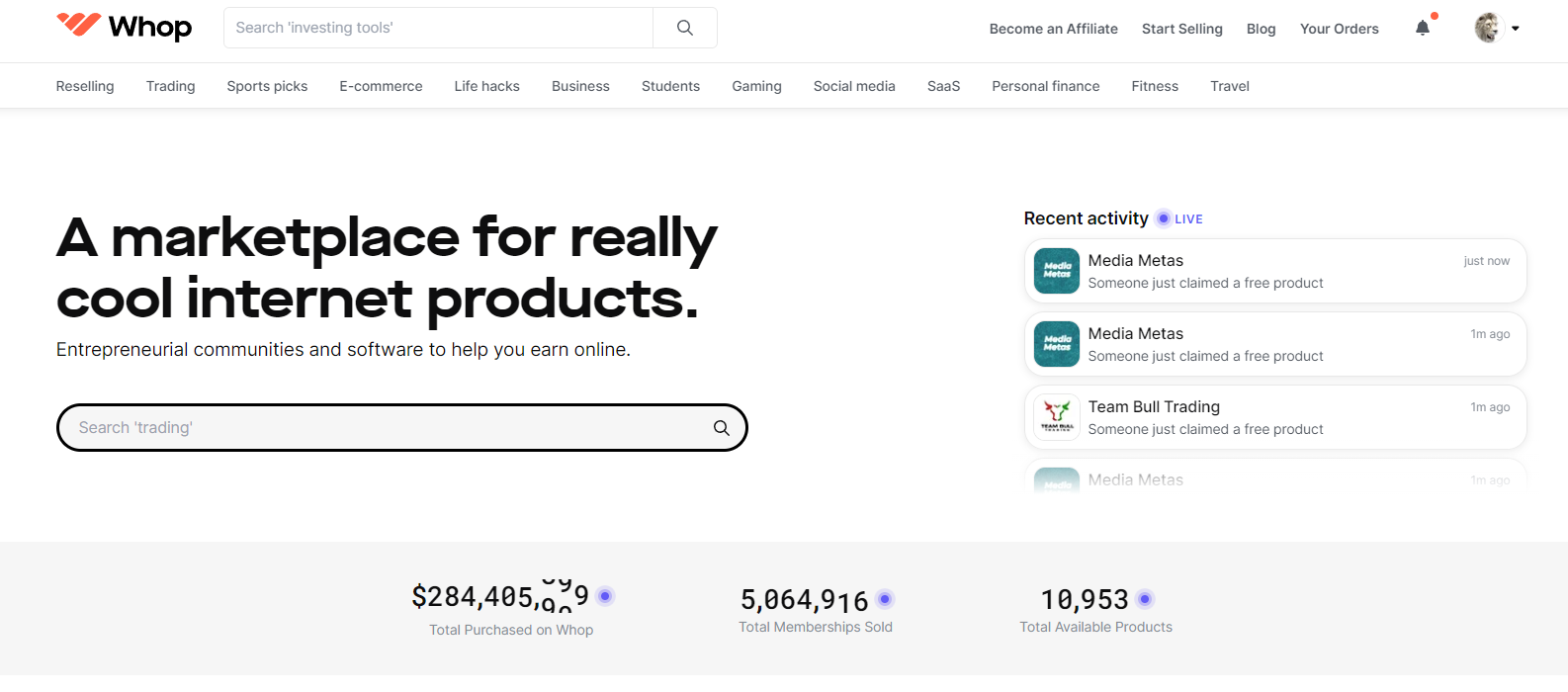
To get started, head to Whop.com and click “Start Selling” on the top right or just follow this link directly. Once more, hit “Start Selling”.
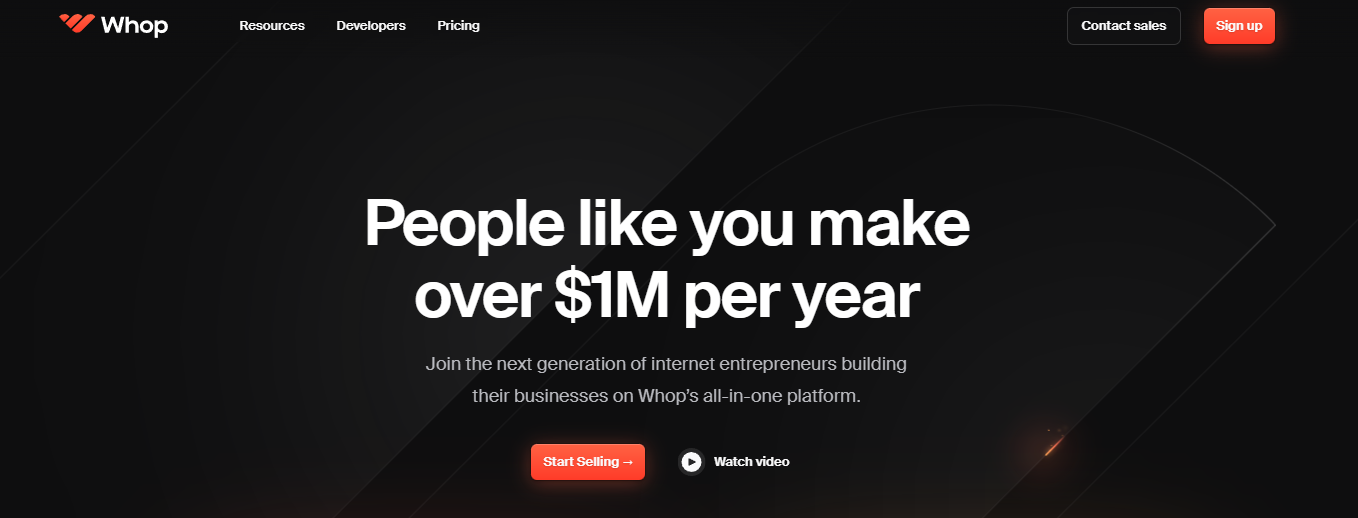
That will bring you to an account creation screen that looks like this:

If you’ve already set up social media accounts to use with your eBook selling business, go ahead and sign in using one of those! Alternatively, just use an email address to create your Whop account.
#2. Create a Store on Whop
Now that you’re all signed up, Whop will prompt you to create a new store. If you’re using a company to sell your eBook you can use the same brand here, or just create a new one. This will act as your store page, so you shouldn’t use your eBook title here.
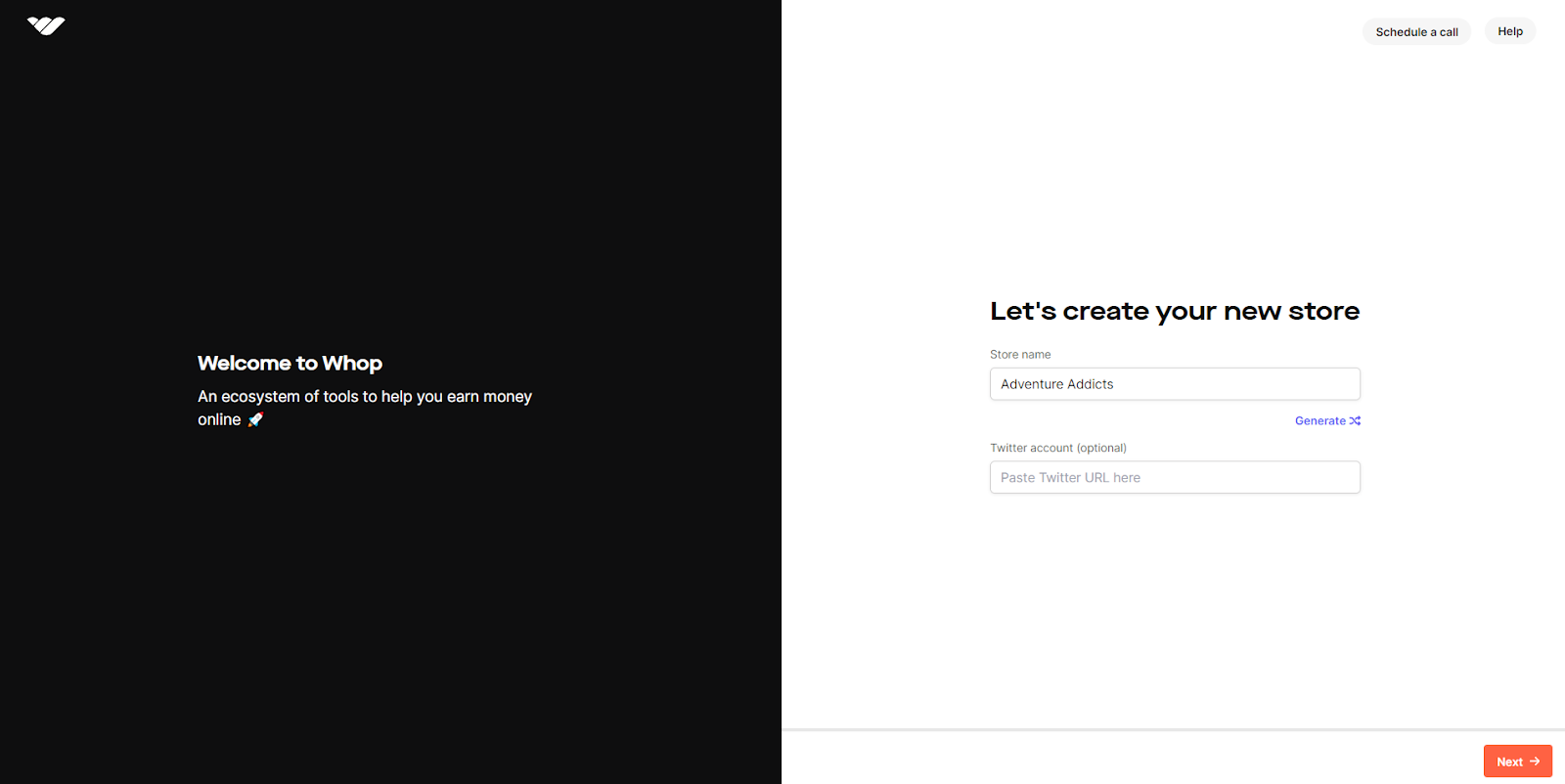
So, just fill out that name field, enter a Twitter handle if you want to, and hit Next!
#3. Choose eBooks as Your Product
Now, Whop will ask you what sort of products you want to sell using your newly created store page. If you see it, select eBooks, or go for “something else” if you don’t. Don’t worry, you can choose to sell other products later, this is just a template to get you started quickly.
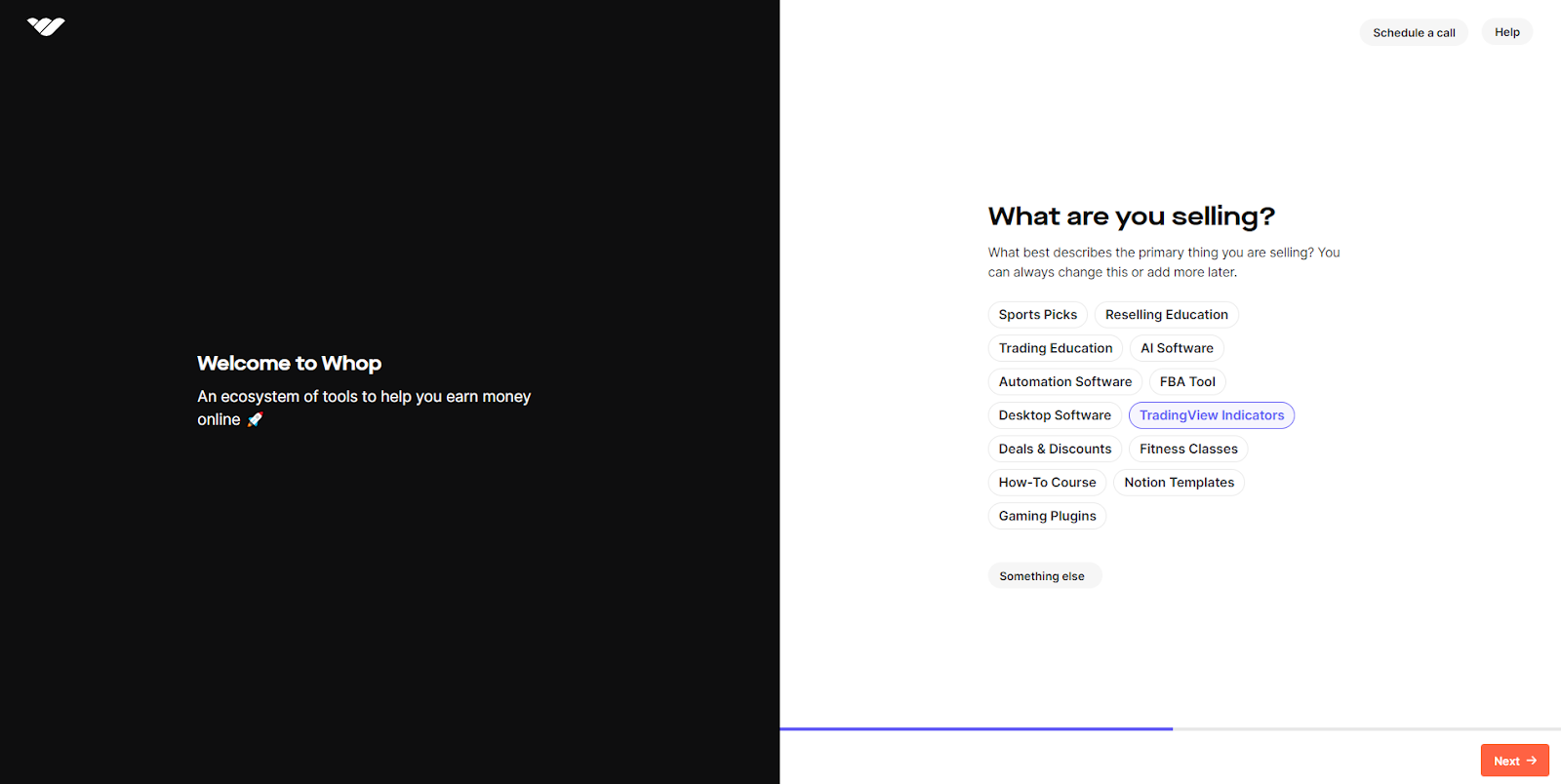
Once you hit next, you will be introduced to your Whop Business Dashboard. This is where you can control every aspect of your store, and you can go through the tutorials there at your leisure.
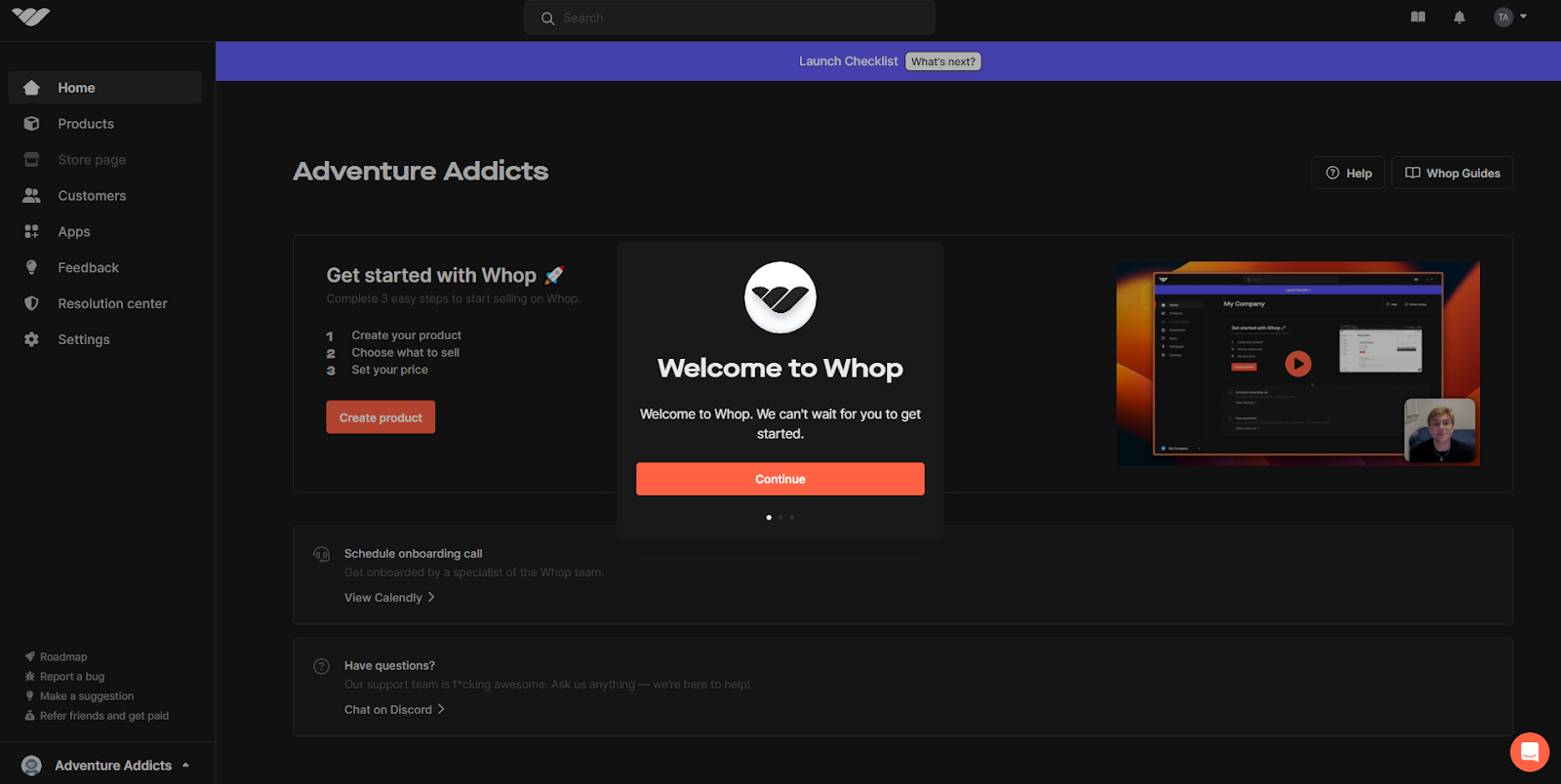
#4. Upload Your eBook!
Almost there! Hit the big “Create Product” or “Set up Product” button in the middle of your dashboard, or head to Products on the left and click “New Product” to proceed.
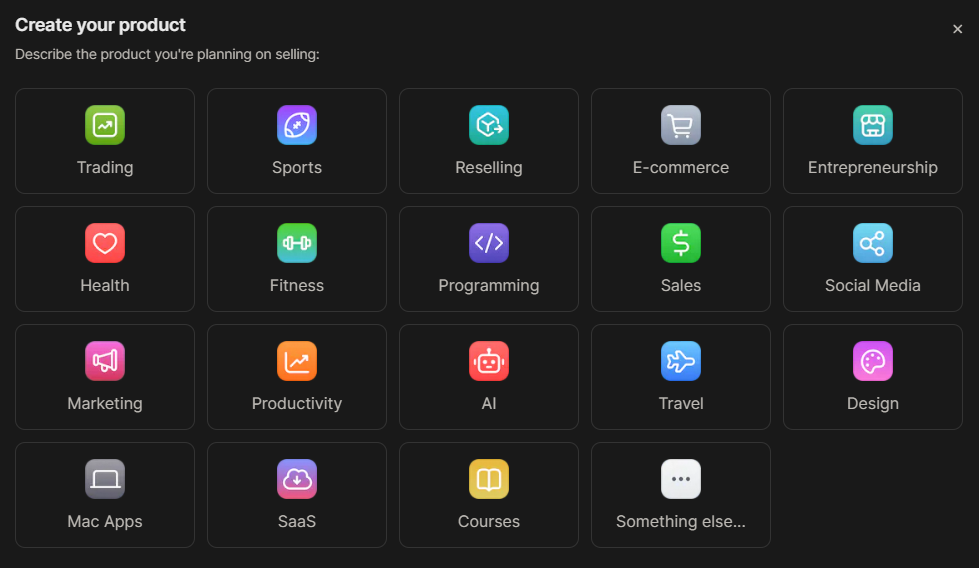
Whop will prompt you for product type again, so check for eBooks here. If it isn’t on this screen right away, click on “Something else” and you’ll see more choices:
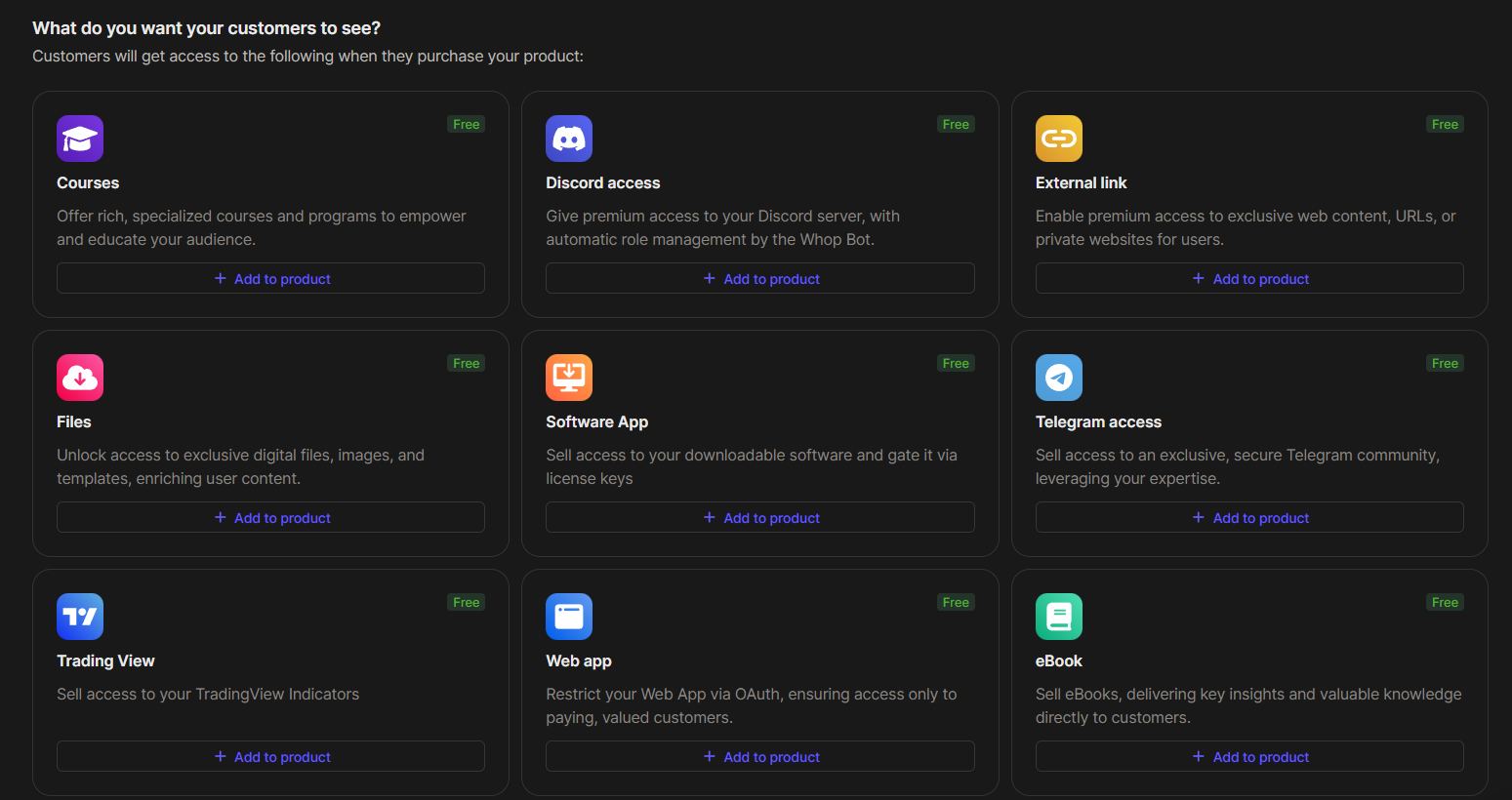
There it is. Go ahead and click on “eBook” and follow the instructions on-screen to upload your eBook.
#5. Get Paid!
Readers can now buy your eBooks, but don’t exit Whop just yet. A big part of the fun of writing and selling eBooks is actually getting paid, so make sure you head to “Settings” on your Whop business dashboard.
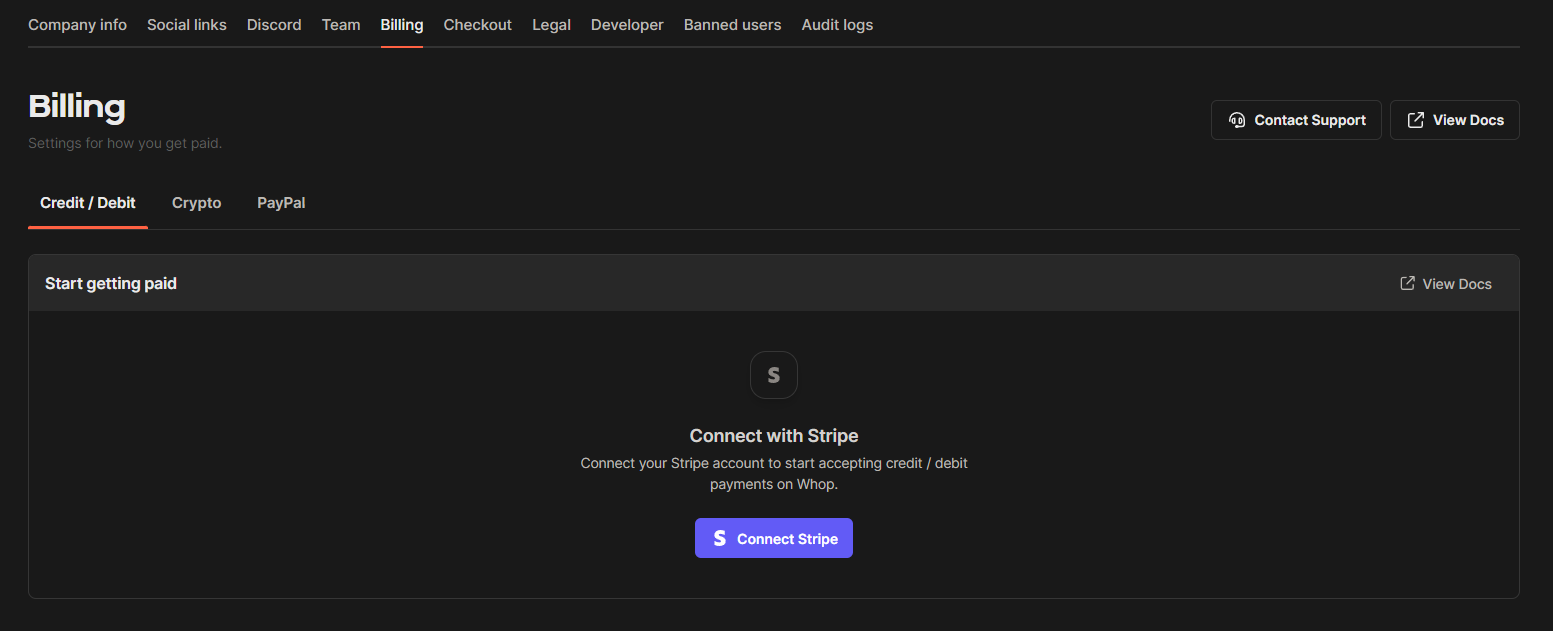
There, click on the Billing tab and set up the payment options you prefer. Whop offers plenty of choice in that regard, and you can even integrate with Stripe.
Start Selling Your eBook Today
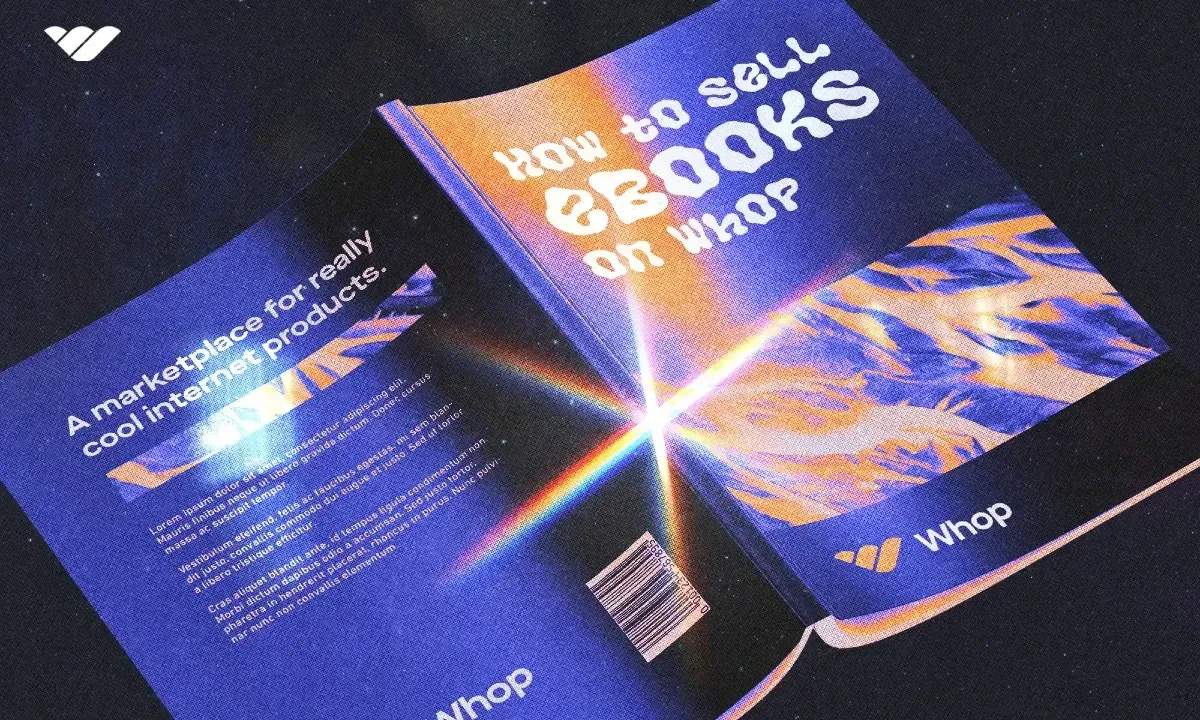
Going from the Whop home page all the way through account creation, store setup, and product configuration shouldn’t take you too long, and you’ll probably spend the majority of that time writing up a good description of your eBook.
On top of being a digital marketplace providing fantastic discoverability with lots of visitors, Whop takes care of everything you need as a seller, looking after regulatory compliance, payment processing, customer service and more, meaning that all you have to worry about is writing that next eBook.
FAQ
How do I market my eBook?
Listing your eBook on a high-traffic digital marketplace like Whop is a great start. You can also try content marketing, offering teasers of your eBook’s content on a blog or via video, or even link up with big content creators in your niche to talk about your eBook.
Do I charge more for a longer eBook?
Generally yes, but value is key. The length of an eBook can define the price range it’s likely to feature in, but page count is never a selling feature—you should market and price your book by how useful or engaging your readers will find it.
What type of eBooks sell best?
This can differ from category to category, and it’s worth putting some research into the readership of the category you plan to write on. In literature, for example, you’ll find that both romance and thrillers sell well, but the audience for the two categories differs wildly. If you can identify what your readership wants and needs to read and then write your eBook accordingly, you’ve got every chance to succeed.
